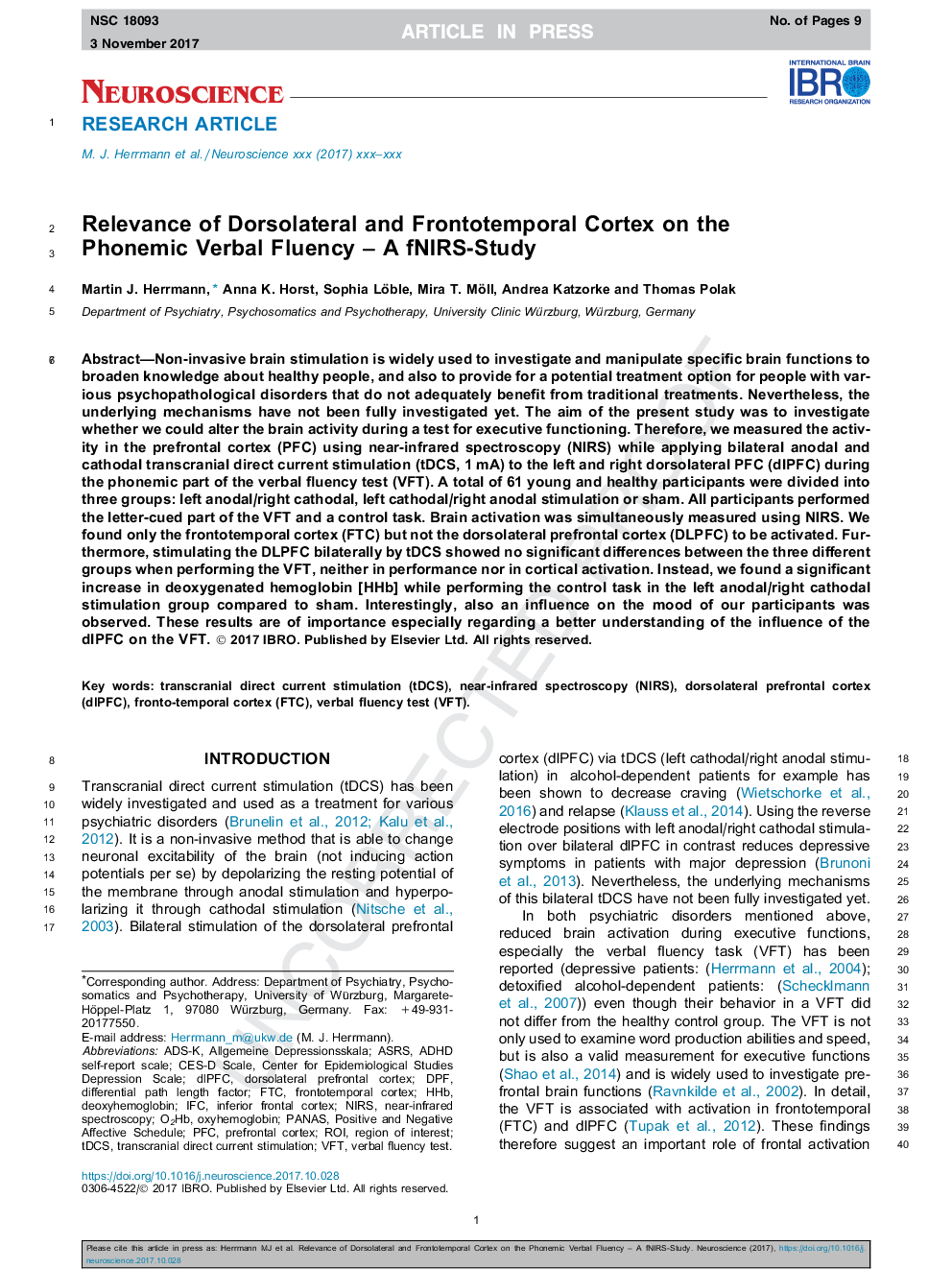| Article ID | Journal | Published Year | Pages | File Type |
|---|---|---|---|---|
| 8841241 | Neuroscience | 2017 | 9 Pages |
Abstract
Non-invasive brain stimulation is widely used to investigate and manipulate specific brain functions to broaden knowledge about healthy people, and also to provide for a potential treatment option for people with various psychopathological disorders that do not adequately benefit from traditional treatments. Nevertheless, the underlying mechanisms have not been fully investigated yet. The aim of the present study was to investigate whether we could alter the brain activity during a test for executive functioning. Therefore, we measured the activity in the prefrontal cortex (PFC) using near-infrared spectroscopy (NIRS) while applying bilateral anodal and cathodal transcranial direct current stimulation (tDCS, 1â¯mA) to the left and right dorsolateral PFC (dlPFC) during the phonemic part of the verbal fluency test (VFT). A total of 61 young and healthy participants were divided into three groups: left anodal/right cathodal, left cathodal/right anodal stimulation or sham. All participants performed the letter-cued part of the VFT and a control task. Brain activation was simultaneously measured using NIRS. We found only the frontotemporal cortex (FTC) but not the dorsolateral prefrontal cortex (DLPFC) to be activated. Furthermore, stimulating the DLPFC bilaterally by tDCS showed no significant differences between the three different groups when performing the VFT, neither in performance nor in cortical activation. Instead, we found a significant increase in deoxygenated hemoglobin [HHb] while performing the control task in the left anodal/right cathodal stimulation group compared to sham. Interestingly, also an influence on the mood of our participants was observed. These results are of importance especially regarding a better understanding of the influence of the dlPFC on the VFT.
Keywords
tDCSHHbdeoxyhemoglobinO2HbOxyhemoglobinDLPFCASRSFTCNIRSVFTfrontotemporal cortexROIPFCDPFIFCTranscranial direct current stimulationTranscranial direct current stimulation (tDCS)Verbal fluency testNear-infrared spectroscopy (NIRS)Near-infrared spectroscopyprefrontal cortexInferior frontal cortexDorsolateral prefrontal cortex (DLPFC)dorsolateral prefrontal cortexCenter for Epidemiological Studies Depression Scaleregion of interestPANAS
Related Topics
Life Sciences
Neuroscience
Neuroscience (General)
Authors
Martin J. Herrmann, Anna K. Horst, Sophia Löble, Mira T. Möll, Andrea Katzorke, Thomas Polak,
